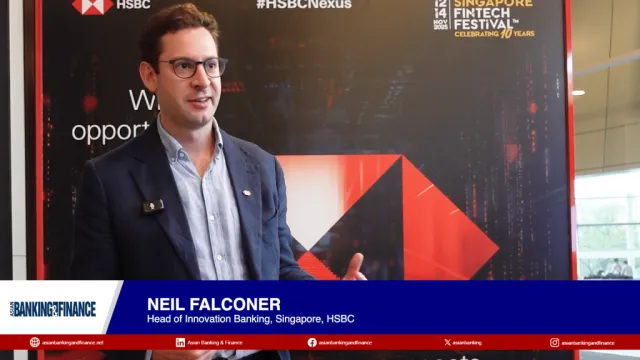The role of banks in project financing in India
By Sandeep AggarwalProject financing has been an integral part of financing options for infrastructure projects globally, both in developed and emerging markets.
In India, local banks, both public sector and private sector, have been the only players in infra project financing (PF), with very little participation from international financial institutions (IFIs). This situation is not sustainable - with increasing demand for funds, and Indian banks reaching their prudential exposure limits, there is an urgent need for new instruments and new players in the financing market. PF can play a very important role – we would discuss below some suggestions to increase the amount of project financing, from the perspective of IFIs.
These issues would be applicable whether the IFI is lending funds directly, or providing a guarantee based on which the borrower could raise fund locally; as long as the borrower credit risk is being carried by the IFI, these issues would be valid and need to be addressed.
IFIs could include commercial banks, export credit agencies, multilateral institutions, credit insurance agencies, development banks, financing arms of equipment vendors, finance companies, specialized funds, sovereign wealth funds, insurance firms, pension funds, overseas parents of Indian company, etc. – essentially any entity which wishes to take a credit exposure on infra sector in India.
Some of these entities are not ‘Eligible Lenders’ under the External Commercial Borrowings (“ECB”) guidelines of Reserve Bank of India (“RBI”). In the event of a borrower default, the non-fund exposure would devolve and get converted into a fund-based exposure to an Indian entity; however, that could lead to violation of ECB guidelines.
Suitable changes should be made in the guidelines to expand the list of Eligible Lenders for infra sector, for all kinds of debt products (including PF) – this would be a significant game-changer in terms of increasing the availability of funds for infra sector. It is worth noting that these and other relaxations in ECB guidelines have been a longstanding demand, but which RBI has not considered favourably so far; moving down this path would be a significant change of stance from RBI.
Lenders need to remember that PF in the Indian context would need to be tweaked, to incorporate the local conditions. For instance, in India, the role of the sponsor or ‘promoter’ is extremely important; hence, lenders would need to derive some comfort (not strictly in a legal sense) from the individual/corporate behind the project – this is more akin to a corporate financing.
Similarly, in a traditional project finance, lenders would expect all the operating agreements to be finalized in a clear-cut manner at financial close, or as a condition precedent to first disbursement. It is a fact of life in India that this does not always happen, and certain conditions precedent end up becoming conditions subsequent, and to that extent lenders end up taking a higher amount of execution risk.
A large number of infra projects in India are structured as a Public-Private Partnership (“PPP”), where the project company is in the nature of a concessionaire – especially for highways, airports, ports, some power plants. Govt. and govt.-owned entities have various roles to play in these projects (more than non-PPP ones) – including grantor of concession, shareholder, regulator, arbitrator, landlord, grantor of approvals, lender, user, etc.
By their very nature, these involve interaction at multiple levels with govt. agencies, which have their own time and procedural requirements. This also introduces an element of uncertainty in the process, which the lenders have to take into account.
A case in point is offtake agreements for power projects. The offtakers are generally State Electricity Boards (“SEBs”), whose standalone financial position is quite precarious. However, these SEBs are arms of the govt., and their deficit is in some way or the other, backstopped by the respective state governments.
The long maturity of debt for infra projects is a significant issue for IFIs, as they find it difficult to take a long-term exposure to India, which is still at barely investment grade rating. This problem is even more pronounced for commercial banks, where country credit lines are allotted in ‘buckets’ of final maturity; the limits for final maturity higher than 7 years are generally very low.
In such a situation, the role of local institutions like IIFCL or multilaterals like ADB becomes very important. IIFCL should be able to structure a product where the principal repayment moratorium is equal to the repayment period of loan from commercial banks i.e. provide a loan whose repayment starts from year 7 (as an example), while commercial banks provide loans with final maturity at year 7.
This is a variation of the traditional ‘take-out’ financing, but the advantage is that banks need internal credit approval only for 7 years. Similarly, multilaterals like ADB can provide a payment guarantee for all loan servicing payments starting at year 7; in this scenario, the commercial banks’ credit risk from year 7 onwards will be on ADB, which will be easier to clear banks’ credit committees.
In both the above situations, IIFCL or ADB need to be pari passu to banks as far as security structure is concerned; it is only in chronological priority of payments that banks are ahead.
Currency Risk: Revenue of most infra projects is INR-based with little natural hedge against INR depreciation. It is difficult to structure long-term USD debt to such projects, and load the cost of hedging onto the project, especially when it is quite expensive to hedge INR for a longer term.
The best solution is for IFIs to take funded exposure for shorter end of the project life; the exposure at the longer end could be through credit support or guarantees where the actual funding could be done through local entities. Govt. has been trying to attract overseas funds to set up such local entities like Infrastructure Development Funds, though the detailed guidelines are still awaited.
Implementation of the above suggestions would provide a significant boost to project financing of infrastructure in India.



















 Advertise
Advertise









